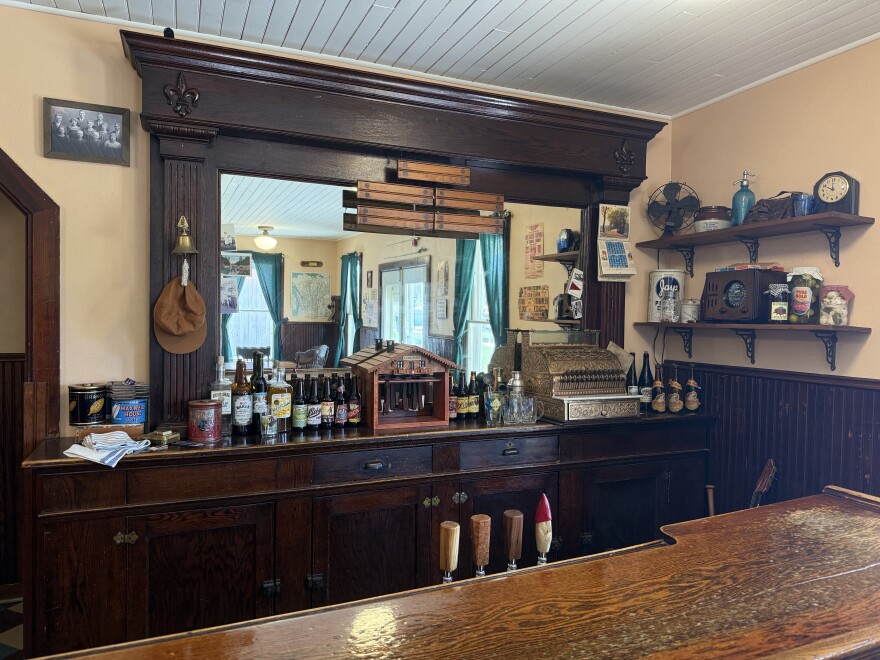For the last few Tuesdays, we’ve been sharing stories about beer and brewing in Wisconsin. For our final Tavern Tuesdays segment we visited the restored Wittnebel’s Tavern at Old World Wisconsin.
It was moved in 2021 from a site about 27 miles away from Dodge County to the outdoor living history museum in Eagle. Wittnebel’s is open to the public, serving 1930s-style beer.
Rob Novak is the brewing experience coordinator and beer and brewing historian at Old World Wisconsin. He discussed how curators recreated a post-prohibition era tavern.
Can you talk about the significance of this tavern?
So, this building was built sometime around 1906 and it was actually attached to a farmhouse which would have been on the backside of the building. It was really a secondary business for the Wittnebel family at the time. They were farming during the day and then whoever was home during the day would be in the house and there was actually a bell that could be rung when a guest came in and they'd come out and serve them a beer. This originally was meant to serve the community of Old Ashippun, which back then was just Ashippun.

The family and extended family and friends of the Wittnebels and other people in town would have been the customers, so they knew each other. I think it would have been very rare, pre-prohibition especially, to have a stranger walk through the doors. We don't have a ton of information from pre-prohibition Wittnebel’s, but looking at other histories of rural taverns it's not hard to imagine what the space would have been like.
Pre-prohibition, you still had a very male dominated drinking clientele. It wasn't until after prohibition you started to see a little bit more opening up for women and families. Although Wittnebel’s was run by a husband and wife team, so it's quite possible that there were more women drinking in here than your average establishment.
What are some of the artifacts on the walls and what's the thought process behind trying to recreate this environment?
When you walk in, we want you to feel like you're walking into the 1930s, but also in a very immersive way that almost makes you feel like you're on a movie set. Everywhere you look, there's something that gives you a hint as to what year you're in. We chose 1934 as our entry point because that was the repeal of Prohibition and the reopening of drinking establishments. What this era represents is a chance for our guests — they come out of the farms on site which go as late as 1910 and then they jump into the 1930 which gives them a sense of, oh, maybe my grandparents came to a place like this or my great grandparents, whereas the rest of the site that's like three or four generations past, so it's a little harder to connect to now.

We can show them things that we take for granted, like the phone on the wall. I think my generation knows what that is because we used phones growing up, but my son might not know what that is and we can make that phone ring, have a guest answer for us and listen to whatever's happening in town. There's three different calls right now dealing with different topics and so that's a neat thing for people to deal with. We had a fun time getting the actors to record those with proper Wisconsin accents.
With all these different elements, you have educational, entertainment, immersive. What's the hope for guests when they leave? What's the takeaway for them?
First and foremost, we want to teach them what these rural taverns were like and what these communities were like. The cool thing about being a bartender in here is a lot of the bartenders from historic taverns from the 1870s to the 1930s became like local politicians because they would hear everything from everybody, and they would kind of be like the center of information. That goes for rural, but also in the cities some of them became very powerful politicians, bartenders and brewery owners.
As you know, you have a few drinks and people start talking. If they feel comfortable in your tavern, you become friends with them essentially, and that has already started to happen in here even without alcohol. It's become kind of an informal meeting spot for the staff. It's just the space — there's something about the space that invites comfort. Germans have this word gemütlichkeit that's hard to translate, but essentially that's what it means is a place of comfort and a feeling of warmth and ease.






